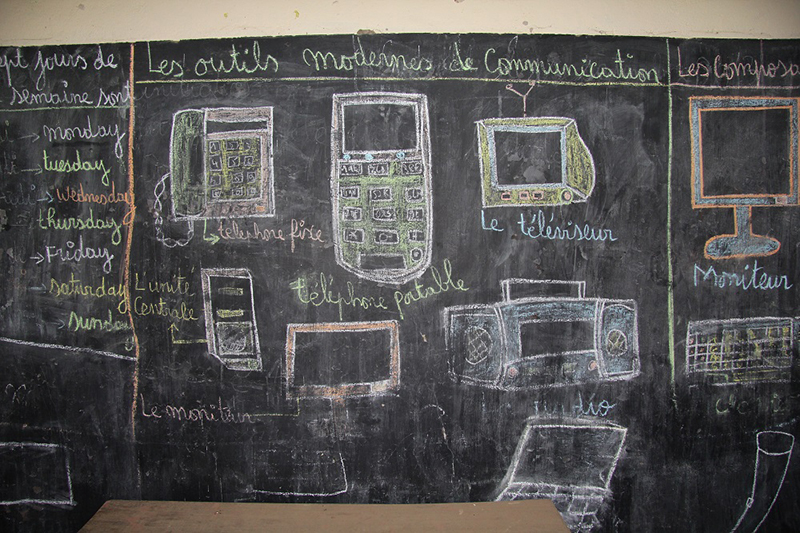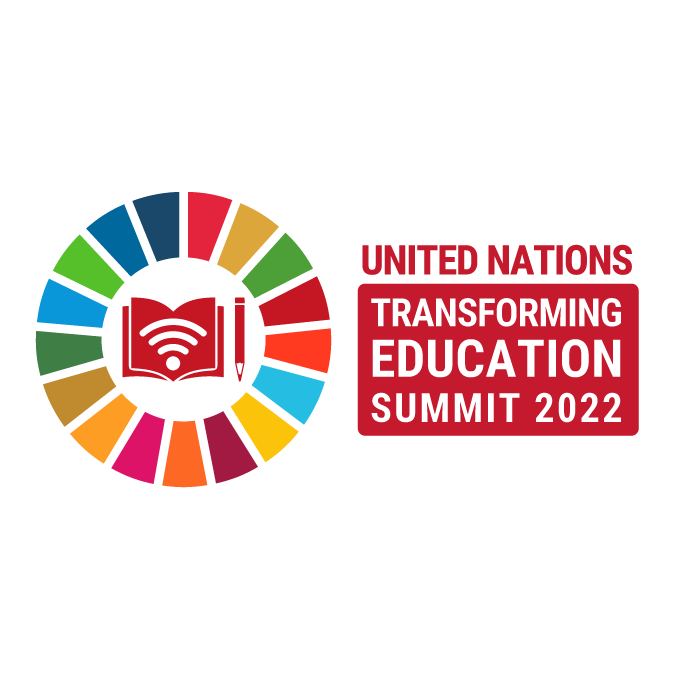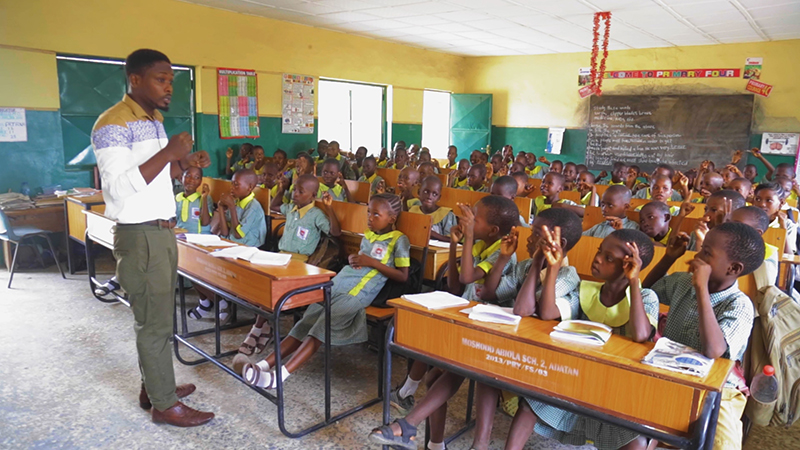A few months ago, at the Education Transformation Summit, the international community recognised that digital learning was key to injecting education systems with the transformative spirit they need to achieve a more inclusive, equitable and quality education for all. In the words of Leonardo Garnier, special advisor to the Education Transformation Summit, “If we really want every young person on this planet to have the right to a quality education, (…) we have to transform schools, the way teachers teach, the way we use digital resources and how we finance education”.
But how to translate these aspirations and declarations into concrete results? Do we have a roadmap for countries to move forward and measure their progress? What should a future global framework for the digital transformation of education include? What elements could be on a hypothetical checklist that countries could use as indicators to know that they are on the right track?
In this article, ProFuturo would like to share its more than five years of experience in implementing and deploying a comprehensive digital education programme in vulnerable environments. This is their vision.
What should a future global framework for the digital transformation of education include? Do we have a roadmap for countries to move forward and measure their progress?
A focus on teacher empowerment
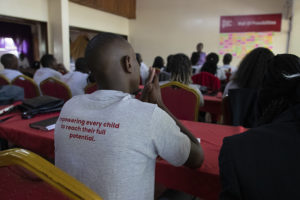
Teachers are the key to the disruptive transformation that education needs in the digital era. They are and have always been the cornerstone of the education system. And they will continue to be so, without them, it’s impossible to provide quality, inclusive and equitable education to all students. Of course, in this new digital society, the role of the teacher in the classroom has changed – and so it should be – as the purpose and nature of education has also changed substantially.
We need teachers who are motivated and able to motivate, who can handle new pedagogies and are able to spark their students’ love of learning with the support of technology; teachers who encourage creativity, critical thinking, teamwork, empathy and resilience, and who are able to adapt quickly to a rapidly changing context. In short, we need empowered teachers. This is why ProFuturo places the teacher at the centre of its system as a catalyst for all educational transformation. What can we do about it?
ProFuturo proposes to empower teachers, through the development or empowerment of three identities (proposed in its Global Framework for Educational Competence in the Digital Age):
- Citizenship identity. This identity involves developing three commitments: to one’s own lifelong learning throughout life, to one’s own fundamental technological literacy, and to society and community.
- Teaching identity itself. This identity involves the assumption of three interconnected tasks: the design of memorable learning experiences, the task of facilitation for the success of all students, and assessment, which regulates learning and enhances professional practice.
- Connecting identity. This identity implies the deployment of competences for interaction with various educational agents, through the development of the roles of collaboration, leadership and mentoring.
Content: digital ecosystems integrating teacher training
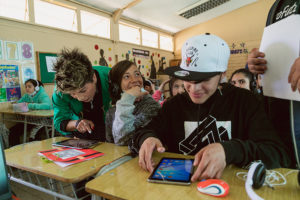
The international community and individual countries must recognise the importance of digital technology and virtual learning environments as key elements of education. At ProFuturo, and always with the empowerment of teachers at the centre of our vision, we believe that a global framework for transforming education must:
- Promote digital ecosystems in classrooms, schools and groups of schools. These ecosystems would take the form of open-source platforms and should allow for the integration of teacher training and the exercise of different classroom experiences; the incentive for teachers to create their own content to be shared with their peers; and the use of resources generated from multiple institutions.
- Encourage the development of educational resources beyond curricular content. These resources can include proposals for innovation projects with the digital in teachers and centres, from a broad constructivist perspective, which would complement the educational resources on curricular content.
These resources can include proposals for innovation projects with the digital in teachers and centres, from a broad constructivist perspective, which would complement the educational resources on curricular content.
Contextualised connectivity
Based on the premise that education goes far beyond the tools themselves and that learning is a multifactorial process in which pedagogy and teaching methodology have a lot to say, at ProFuturo we consider that:
- Training for the digital age has to precede connectivity itself. This is why, especially in vulnerable contexts, offline digital models of training and classroom experiences are essential.
- The needs of educational centres must be taken into account. The world of digital transformation in education is littered with well-intentioned initiatives that ended up with hundreds of digital devices gathering dust in a school’s storage room. When we talk about connectivity and technology, we must bear in mind that this must always be closely linked to the real needs and demands of educational centres and their degree of digital maturity. That is, their ability to work in a network, the demand for interactive digital content in their classrooms…
- Connectivity goes beyond quality network access. Connectivity implies an adequate deployment of coverage in classrooms and technical developments that enable interactive digital classrooms with unimpeded access to networks, adapted to the pedagogical practices required at each moment and in each learning environment.
Coordination, consortium work and data intelligence
Any framework for the digital transformation of education must take into account some elements that, without being strictly educational in nature, are very necessary to complete the digital transformation of education: political, financial and governance elements. In this respect, the overall frame of reference should:
- Consider appropriate formulas of deployment models to enable the implementation of this digital transformation at scale. A significant example of these formulas is the cascade deployment model used by ProFuturo, in which the coaches (and counterparts) who collaborate in the Programme reorient their actions towards more pedagogical and didactic themes (of the classroom and centre) that allow them to develop a more flexible and adapted action in the implementation of training: blended and cascade. The ultimate aspirational goal should be to collaborate with teachers in transforming the classroom experience of their students.
- To develop a new vision of consortium work, where each partner contributes resources and expertise to form a joint management system. This would involve the incorporation of global partners to help both the sustained growth of third party resources and the development of new deployment formulas.
- To have an advanced data exploitation system to assist decision making. These data analytics and intelligence resources would become a central tool in our monitoring and evaluation system and a real tool for learning and knowledge management.
One of the central tenets of ProFuturo is to reiterate our “ultimate cause” on education, as a fundamental pillar for the socio-economic development of countries, and our choice to promote technology and innovation, as they allow its qualitative and quantitative expansion to all corners of the planet. From our conviction and experience that digital education is one of the most powerful tools to transform the world, we assume that there are still multiple challenges that prevent education systems from integrating new technologies efficiently and effectively for excellence in the teaching-learning processes. The World Summit for Education Transformation took an important first step in mobilising awareness and spreading the word about the challenges. We now need to walk that path to finally make education and technology the perfect match to help all children have the future they deserve.



